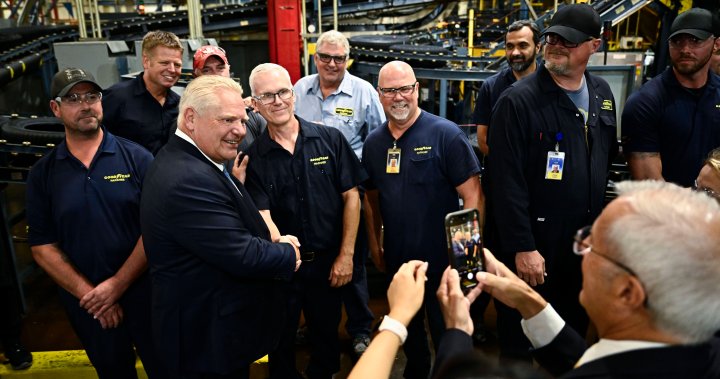The Trump administration has yet to land on a formula for tariffs on automotive parts, according to one of Premier Doug Ford’s top cabinet ministers who suggested the unfinished calculation is the primary reason why the sector was previously spared.
On April 3, Canadian-made cars and trucks shipped to the United States were hit with a 25 per cent tariff. Federal officials have been told the U.S. plans to apply similar tariffs to certain auto parts on May 3 — with potential exclusions for parts that include American content — but is yet to do so.
Industry associations have already warned that tariffs on auto parts could send another shockwave through the sector and potentially seize up the auto manufacturing supply chain within days of tariffs being implemented.
Ontario’s trade minister said the province has been working behind the scenes to convince U.S. trade representatives to avoid repeating the mistakes made on Trump’s “liberation day” when the White House formula used to apply global tariffs was widely criticized.
“When we were at the (United States Trade Representative), that was a big part of our discussion, is that it’s very difficult to try to come up with a formula, how do you tariff a part that goes back and forth so many times,” Vic Fedeli, who serves as the Minister of Economic Development, Job Creation and Trade, told reporters at Queen’s Park on Thursday.
Get breaking National news
For news impacting Canada and around the world, sign up for breaking news alerts delivered directly to you when they happen.
Fedeli said indecision over the formula played a role in the auto parts tariffs being delayed by the Trump administration. That thinking, he argues, should be followed to its logical conclusion.
“We said to them, come May 3, if you haven’t figured it out, that’s your answer: that it’s not something that’s going to be able to be done, or done easily,” Fedeli said.
Instead, Fedeli said, he asked trade representatives to “give it a pass” and highlighted the impact on business confidence.
“We’ve said don’t just keep delaying it by a month, it’s putting a chill on business,” Fedeli said. “And the decision should be: we’re not building things for each other, we’re building things with each other.”
Ontario is currently home to more than 350 auto parts suppliers that are watching the ongoing trade war between the U.S. and Canada with growing concerns.
Several vehicle plants are either shut down or have announced plans to pause production.
Before Trump’s on-again, off-again tariff blitz, a Ford production facility in Oakville confirmed it would remain closed until 2027 for retooling, and a Stellantis plant in Brampton announced an abrupt work stoppage.
When tariffs did hit, Stellantis also paused production at its Windsor facility to assess the situation. GM Canada has separately announced job cuts at an electric delivery vehicle manufacturing plant in Ingersoll, although it said the change is related to demand and not tariffs.
Flavio Volpe, president of the Automotive Parts Manufacturing Association, said those pauses and production changes leave the industry on the brink. Adding tariffs to auto parts in less than a month could push it over the edge.
He said Ontario has nine major assembly plants, seven of which make cars. Three of the plants that make cars have paused production.
“When auto parts tariffs come in from the U.S., we’re going to see the crisis that the premier has been talking about, that we’ve been talking about,” he told Global News.
“The parts tariffs will be very brutal to automakers with lower than average profits right now and that don’t have control of their own supply chain.”
Premier Ford has warned assembly lines will shutter within days of tariffs hitting — and his government has promised billions of dollars in stimulus and relief as a result of any tariff job losses.
Volpe, however, said federal and provincial governments aren’t currently discussing financial relief for the companies themselves.
“There’s no bailout discussions happening just yet because this is a different threat than 2008, 2009, when the world fell apart,” he said.
“Here, one man controls a U-turn. So instead of saying, ‘Here’s tens of billions of dollars that are available,’ it’s how do we play our cards in this tariff war.”
© 2025 Global News, a division of Corus Entertainment Inc.

